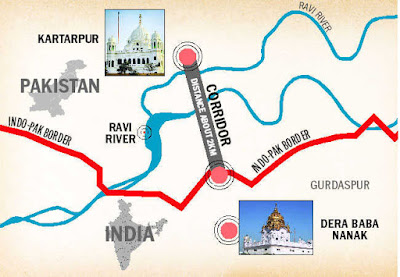ISRO successfully launched HysIS satellite on PSLV-C43 : What is there in it for us?
What is HysIS ?
- HysIS stands for Hyperspectral imaging satellite.
Image source : THE HINDU.
- HysIS is the India's first Hyperspectral Imaging satellite for advanced earth observation.The satellite is equipped with hyperspectral camera which uses hyperspectral Imaging technology to provide well-defined images that can help to identify objects on Earth far more clearly than regular optical or remote sensing cameras.
what is Hyperspectral Imaging Technology?
Hyperspectral imaging, like other spectral imaging, collects and processes information from across the electromagnetic spectrum. The goal of hyperspectral imaging is to obtain the spectrum for each pixel in the image of a scene, with the purpose of finding objects, identifying materials, or detecting processes. A human eye can see visible in mostly three bands(long wavelengths - perceived as red, medium wavelengths - perceived as green, and short wavelengths - perceived as blue).
The HySIS will use the “optical imaging detector array”, which is a chip that will enhance the capability of the Earth Observation satellite. Developed by ISRO, the chip will play a critical role in the functioning of the satellite, and hence it is decided to test the chip to perfection.
HysIS satellite will be used to map the earth without any electrical discharge disturbances form the upper atmosphere. It will be placed in a 636 km polar sun synchronous orbit with an inclination of 97.957 degrees which will keep the satellite position constant with the position of the sun which will make the satellite to maintain its path according to earth's rotation and revolution.
This technology will be an added advantage in watching over India from space across sectors including Defence,Agriculture,land use and mineral exploitation.
It will be used for detailed analysis of the weather patterns to aid agriculture . It will also help to monitor Indian coastlines to estimate the conditions of fishing in high seas and possible security matters. Above all it provides insights in to earth's geology with the possibility of analysing earth seismic activity.
The "NEW EYE IN THE SKY" can be used to even mark out a suspect object or person from the sky and separate it from the background. For example,India is facing lot of terror infiltration across the border with Pakistan and this satellite can be used to identify such suspects with more accuracy.
The primary goal of the HysIS satellite is to study the earth surface in visible,near infrared and shortwave infrared regions of the electromagnetic spectrum. It is built to work for five years and the satellite weighs 380 kgs.
Image Source : ISRO.
HysIS satellite will be used to map the earth without any electrical discharge disturbances form the upper atmosphere. It will be placed in a 636 km polar sun synchronous orbit with an inclination of 97.957 degrees which will keep the satellite position constant with the position of the sun which will make the satellite to maintain its path according to earth's rotation and revolution.
This technology will be an added advantage in watching over India from space across sectors including Defence,Agriculture,land use and mineral exploitation.
It will be used for detailed analysis of the weather patterns to aid agriculture . It will also help to monitor Indian coastlines to estimate the conditions of fishing in high seas and possible security matters. Above all it provides insights in to earth's geology with the possibility of analysing earth seismic activity.
The "NEW EYE IN THE SKY" can be used to even mark out a suspect object or person from the sky and separate it from the background. For example,India is facing lot of terror infiltration across the border with Pakistan and this satellite can be used to identify such suspects with more accuracy.
The primary goal of the HysIS satellite is to study the earth surface in visible,near infrared and shortwave infrared regions of the electromagnetic spectrum. It is built to work for five years and the satellite weighs 380 kgs.
Mission Specialty :
The specialty of the mission is that the launch will last for 8 minitues short of two hours making it the third longest low earth mission of ISRO. The satellites would be ejected in two orbits by restarting the rocket's fourth-stage engine twice. The PSLV, flying in its core-alone format, will first release HysIS to an orbit distant 636 km after 17 minutes from launch. later, two engines will restart after an hour from launch and again — 47 minutes later — all customer satellites would be put into a lower orbit at 504 km. The longest mission, C-40 in January this year, lasted two hours and 21 minutes and put 31 satellites to orbit. In September 2016, C-35 lifted eight satellites in a flight lasting two hours and 15 minutes.Source :
https://www.thehindu.com/sci-tech/technology/isro-to-launch-new-imaging-satellite-hysis-on-thursday/article25605073.ece
https://www.geospatialworld.net/blogs/isro-plans-develop-hyperspectral-imaging-satellite/






Comments